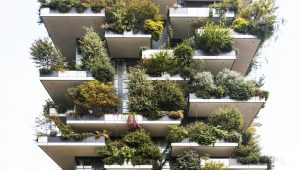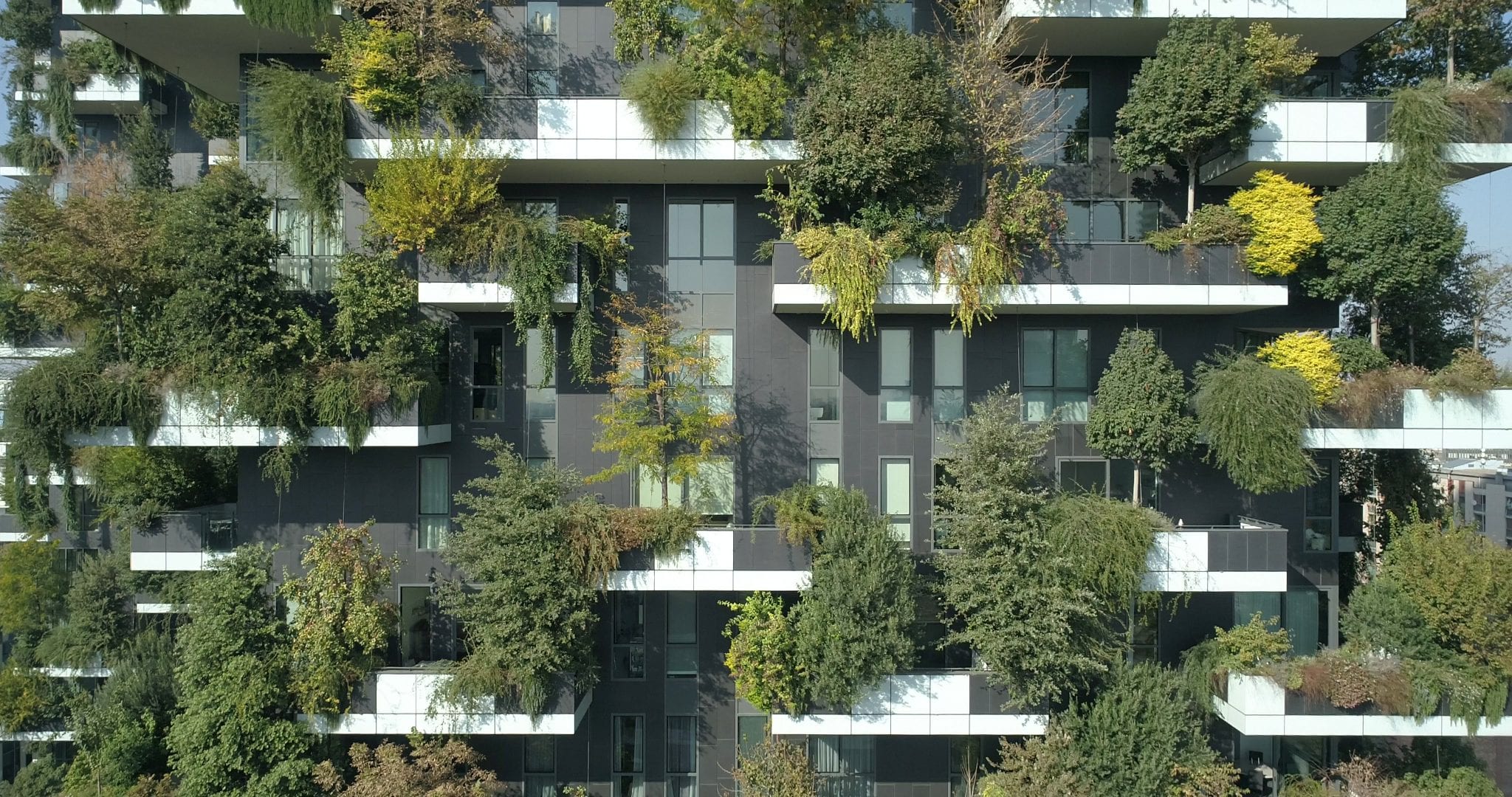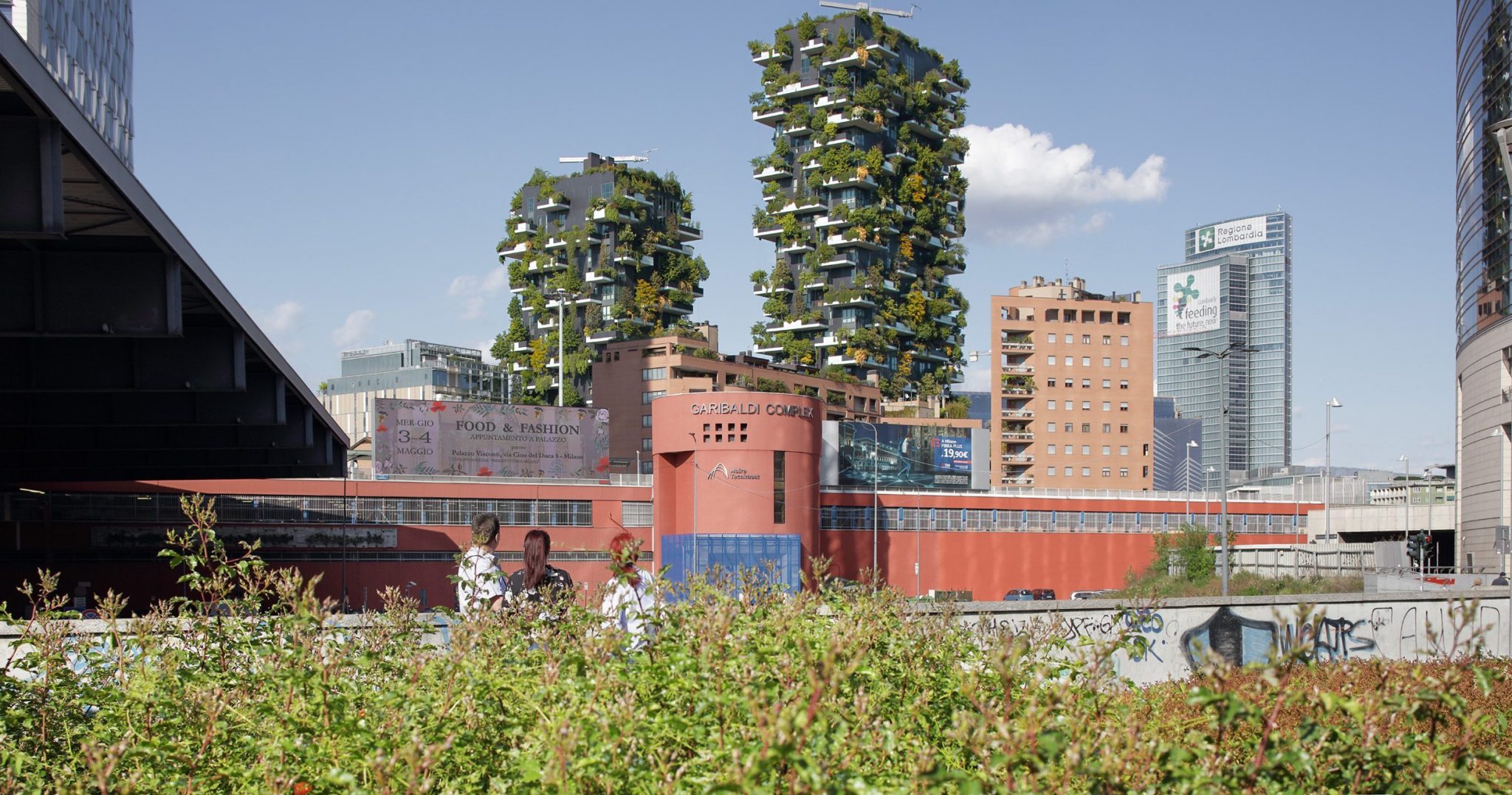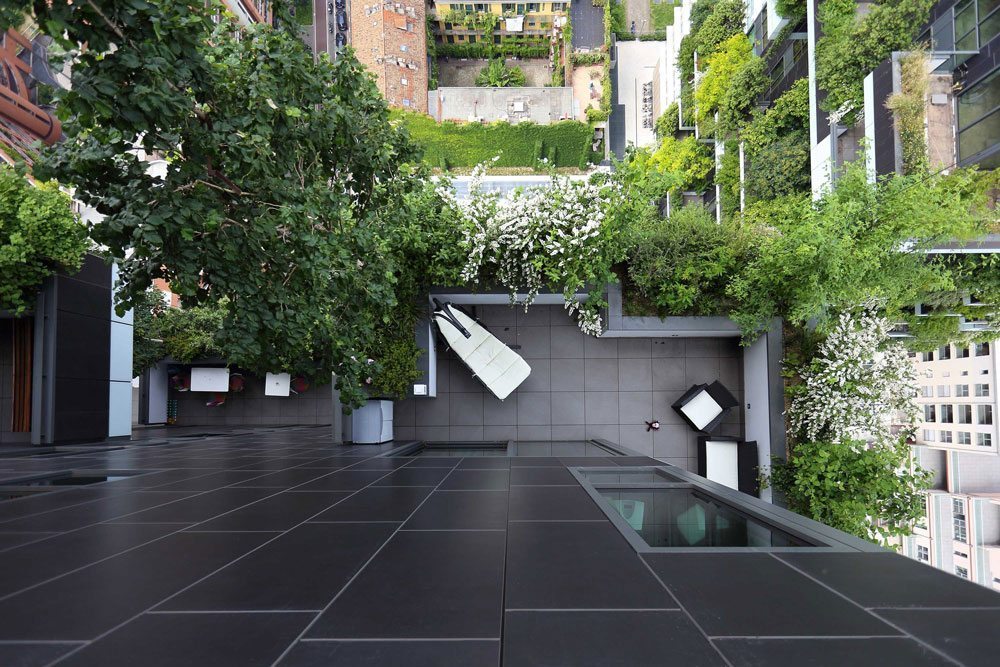General Discussion
Related: Editorials & Other Articles, Issue Forums, Alliance Forums, Region ForumsVegetation-covered towers create 20,000 square feet of forest.

Vertical Forest is a model for a sustainable residential building, a project for metropolitan reforestation contributing to the regeneration of the environment and urban biodiversity without the implication of expanding the city upon the territory. It is a model of vertical densification of nature within the city that operates in relation to policies for reforestation and naturalization of large urban and metropolitan borders. The first example of the Vertical Forest consisting of two residential towers of 110 and 76 m height, was realized in the centre of Milan, on the edge of the Isola neighborhood, hosting 800 trees (each measuring 3, 6 or 9 meters), 4,500 shrubs and 15,000 plants from a wide range of shrubs and floral plants distributed according to the sun exposure of the facade. On flat land, each Vertical Forest equals, in amount of trees, an area of 20,000 square meters of forest. In terms of urban densification it is the equivalent of an area of a single family dwelling of nearly 75,000 sq.m. The vegetal system of the Vertical Forest contributes to the construction of a microclimate, produces humidity, absorbs CO2 and dust particles and produces oxygen.
Biological habitats. Vertical Forest increases biodiversity. It helps to set up an urban ecosystem where a different kind of vegetation creates a vertical environment which can also be colonized by birds and insects, and therefore becomes both a magnet for and a symbol of the spontaneous re-colonization of the city by vegetation and by animal life. The creation of a number of Vertical Forests in the city can set up a network of environmental corridors which will give life to the main parks in the city, bringing together the green space of avenues and gardens and interweaving various spaces of spontaneous vegetation growth.
Mitigations. Vertical Forest helps to build a micro-climate and to filter dust particles which are present in the urban environment. The diversity of the plants helps to create humidity and absorbs CO2 and dust, produces oxygen, protects people and houses from harmful sun rays and from acoustic pollution.
Anti-sprawl. Vertical Forest is an anti-sprawl measure which aims to control and reduce urban expansion. If we think of them in terms of urban densification, each tower of the Vertical Forest is equivalent to an area of urban sprawl of family houses and buildings of up to 50,000 square metres.
Trees are a key element in understanding architectural projects and garden systems. In this case the choice of the types of trees was made to fit their positioning on the facades and by height, and it took two years to finalize it, alongside a group of botanists. The plants used in this project will be grown specifically for this purpose and will be pre-cultivated. Over this period these plants can slowly get used to the conditions they will find on the building.
Ecology billboards. Vertical Forest is a landmark in the city which is able to depict new kinds of variable landscapes changing their look over seasons, depending on the types of plants involved. The Vertical Forests will offer a changing view of the metropolitan city below.
Management. The management of the tree pots is under building regulation, as well as the upkeep of the greenery and the number of plants for each pot.
Irrigation. In order to understand the need for water, the plan for these buildings took into account the distribution of plants across the various floors and their positioning.



https://www.stefanoboeriarchitetti.net/en/project/vertical-forest/
True Dough
(17,301 posts)always be cocking his leg on the balcony?
![]()
Mr.Bill
(24,282 posts)Looks good and looks like it would be nice to live there. But living in California, I must say the fire hazard comes to mind. A robust sprinkler system would be a necessity.
maxsolomon
(33,310 posts)Last edited Thu Jul 18, 2019, 04:10 PM - Edit history (1)
don't worry, this concept would be prohibitively expensive to build. it will never happen.
on edit: it happened.
Mr.Bill
(24,282 posts)vegetation fire that would shoot up the building.
maxsolomon
(33,310 posts)in the IBC.
Bayard
(22,059 posts)Where this was photographed.
maxsolomon
(33,310 posts)we make them for every project now.
"The first example of the Vertical Forest consisting of two residential towers of 110 and 76 m height, was realized in the centre of Milan"
maxsolomon
(33,310 posts)those images sure look like CGI!
Duppers
(28,120 posts)Wish the practice were adopted across the US.
Bayard
(22,059 posts)Improve air quality and aesthetics.
Looks mostly like evergreens....cedars maybe. So year round.
Demovictory9
(32,448 posts)Scurrilous
(38,687 posts)Demovictory9
(32,448 posts)TygrBright
(20,758 posts)Heckuva mess to clean up if they get an infestation.
interestedly,
Bright
Hortensis
(58,785 posts)keep all this tidy and in good health, replacing plants as needed. Only for the wealthy. However, this kind of thing is already being done to a much more limited degree in many places already.
Thanks for posting the inside view, Demo. I was going to go look for it.
Our home isn't a high rise, but we limited tree removal as much as possible, and the first thing we did after building it was plant trees on the east and west. After they finish leafing out in spring, it costs us nothing to watch parent birds bring the insects they've picked off leaves back to the nest boxes we put up, all day long. ![]()
JustABozoOnThisBus
(23,338 posts)Princetonian
(1,501 posts)Great idea.
bucolic_frolic
(43,128 posts)Because if you don't control them, they will grow and grow, susceptible to snow, ice, wind, and the roots will crack pots, cement.
Seriously, this is a maintenance nightmare, or an opportunity if you're paid to prevent the inevitable.
royable
(1,264 posts)Limbs and branches could break off and fall, and wind could contribute to breakage and carrying the falling material away from the tower, creating quite a zone for potential damage from falling debris around the tower. If such a tower were built in an area that could get sleet or ice storms, there could be even more potential damage from sudden buildup of ice on branches that were thought to be safe. I've seen what can happen to individual trees as well as forests with damage from ice storms and/or high wind. And I've seen plenty of houses and cars damaged by falling branches. Luckily I haven't known anyone injured or killed from falling branches, but I know it happens.
I'd be interested in seeing a calculation of the extra energy used and pollution generated to create and install the extra building materials (mining of iron ore, production of steel & concrete, etc.) needed to add to the structures to supply the space for and support the weight of the plantings, compared to the energy reduction and pollution-combatting benefits of the vegetation over time.
Color me skeptical.
peggysue2
(10,828 posts)first peek into our urban future where concrete and glass and linear lines are not enough. Not if we want our planet and the air we breathe to survive. Plantings and foliage like this is also good for the human soul, reminds us how we're all part of the natural world and need to become true caretakers.
I find these designs and images wonderful.
Alwaysna
(574 posts)bucolic_frolic
(43,128 posts)to keep the roots from causing damage. Think of the way trees raise concrete sidewalks, or pressure a foundation wall.